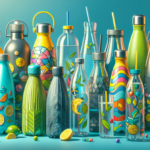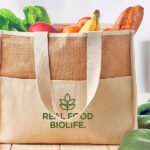Alternatives to Styrofoam: Top Eco-Friendly Options Explored

In the quest for sustainability, finding alternatives to Styrofoam has become a critical environmental goal. Styrofoam, or expanded polystyrene (EPS), is notorious for its negative impact on the environment. It's non-biodegradable, difficult to recycle, and its production and degradation release harmful chemicals into the atmosphere and waterways. Fortunately, innovative solutions are emerging, offering eco-friendly alternatives that promise to reduce our carbon footprint and promote a healthier planet. In this article, we delve into some of the top alternatives to Styrofoam, exploring their benefits and potential to revolutionize packaging and insulation industries.
Cruz Foam: The Sustainable Choice
One of the most promising alternatives to Styrofoam is Cruz Foam, a material derived from chitin, which is found in the exoskeletons of crustaceans and other shellfish. This bio-based material is not only sustainable but also biodegradable, breaking down into harmless substances within weeks. Cruz Foam's production process is environmentally friendly, requiring less energy and emitting fewer greenhouse gases compared to traditional Styrofoam manufacturing. Its versatility allows it to be used in a wide range of applications, from packaging to insulation, making it a viable and eco-conscious choice for businesses and consumers alike. The adoption of Cruz Foam could significantly reduce the reliance on EPS, thereby mitigating its environmental impact.
PLA Lined Paper: Biodegradable and Versatile
Another excellent alternative to Styrofoam is PLA (polylactic acid) lined paper. PLA is a bioplastic derived from renewable resources such as corn starch or sugar cane. When used to line paper products, it creates a waterproof barrier, making it an ideal material for disposable cups, plates, and containers. Unlike Styrofoam, PLA lined paper is fully biodegradable and compostable under the right conditions, breaking down into water and carbon dioxide without leaving toxic residues. Its versatility and environmental credentials make PLA lined paper a popular choice for food service items, offering a practical and sustainable solution to single-use Styrofoam products.
Edible Packing Peanuts: Safe for the Environment and Wildlife
Edible packing peanuts represent an innovative and eco-friendly alternative to Styrofoam packing materials. Made from natural, biodegradable ingredients such as wheat and cornstarch, these packing peanuts dissolve in water and are safe for wildlife if ingested. This characteristic eliminates the risk of environmental pollution and harm to animals associated with traditional Styrofoam peanuts. Edible packing peanuts provide effective cushioning and protection for goods during shipping, matching the performance of their EPS counterparts. Their adoption not only reduces environmental impact but also offers a unique unboxing experience that can enhance brand image and customer satisfaction.
Plantable Packaging: Grow Your Garden with Every Purchase
Plantable packaging is a novel and eco-conscious alternative to Styrofoam that goes beyond reducing waste—it adds value to the environment. This type of packaging is made from biodegradable materials embedded with seeds. Once the product has been used, the packaging can be planted in soil, where it will decompose and give rise to new plants. This innovative approach not only eliminates waste but also promotes biodiversity and greenery. Plantable packaging is particularly suited for small items and can be a great marketing tool for eco-friendly brands, encouraging customers to engage in sustainable practices while enjoying their purchases.
Mineral Filled Polypropylene: Reducing Plastic, One Package at a Time
Mineral filled polypropylene (MFPP) is a cutting-edge alternative to Styrofoam that reduces the use of plastic without compromising on durability or recyclability. By incorporating mineral fillers into polypropylene, manufacturers can produce lighter, stronger, and more sustainable packaging solutions. MFPP is fully recyclable and offers significant environmental benefits, including reduced plastic consumption and lower greenhouse gas emissions during production. Its versatility makes it suitable for a wide range of applications, from food containers to protective packaging. As businesses and consumers increasingly prioritize sustainability, MFPP stands out as a practical and eco-friendly option that aligns with environmental goals.
The search for alternatives to Styrofoam is yielding a variety of innovative and sustainable solutions. From Cruz Foam and PLA lined paper to edible packing peanuts, plantable packaging, and mineral filled polypropylene, these alternatives offer the potential to significantly reduce environmental impact. By embracing these eco-friendly options, businesses and consumers can contribute to a healthier planet, promoting sustainability and reducing the reliance on harmful materials like Styrofoam. As technology and environmental awareness continue to evolve, the future looks promising for the development of even more effective and sustainable packaging solutions.





Leave a Reply